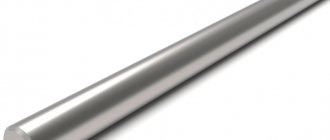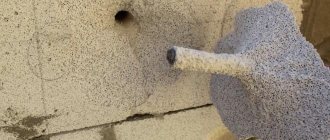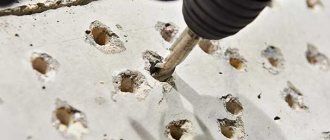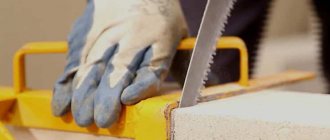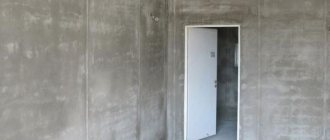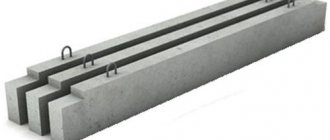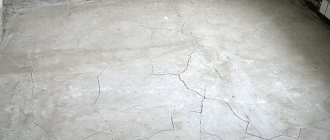What does it mean to win?
Engineers have been developing especially hard metal alloys for the manufacture of cutting tools since the beginning of the development of mechanical processing of metal on an industrial scale. And by the twenties of the last century, foreign and domestic scientists were able to find the optimal alloy composition that would satisfy the stated needs. This alloy was named Pobedit. Pobedit is a name given to a whole range of metal alloys with increased hardness, strength and wear resistance.
According to the Rockwell method, hardness indicators should reach 85-90 units.
The main material in Pobedite is tungsten carbide. Its content is within 90%. The remaining important components are cobalt and a limited amount of carbon. In some cases, expensive tungsten has recently been replaced with titanium, but if replaced, the alloy slightly deteriorates its important characteristics. Cobalt can also sometimes be replaced with nickel. Pobedit is a heat-resistant material. Its melting point is 3150 ˚С. It begins to lose its properties and become soft only at 1200˚C. They are obtained mainly by powder metallurgy methods.
Various solderings
Pobedit includes such grades of hard alloys as VK4, VK10, T15K6, V8, V6 and many other new alloys.
The disadvantages of this material include high fragility and low impact resistance, as well as relatively high cost. Therefore, metal-cutting tools are not made entirely of pobedit, but only some parts of drills are made from it or sprayed onto the surface. A pobedit drill has a cutting edge made of pobedit, and therefore has high strength and hardness.
Scope of application
Pobedite drills are mostly used for installation purposes and creating holes in high-strength building structures. Equipment of this type is used to perform the following operations:
- Drilling of rocks of increased hardness.
- Drilling holes for laying water supply, ventilation and sewer networks.
- Installation of fasteners for furniture products and accessories.
- Dismantling of concrete structures.
- Drilling earthenware, glassware and ceramic tiles.
- Drilling channels when laying communications.
Design features of a drill with pobedit
A pobedite drill does not differ significantly in appearance from a standard twist drill. It also consists of a shank, a working part and a cutting edge and has a cylindrical shape. The shank can be cylindrical, hexagonal, or have an SDS profile if it needs to be installed in a hammer drill. The working part of the drill is made of tool steel and has a number of helical grooves on the surface designed to remove chips from the drilling zone. But the drill tip is made of hard alloy - pobeda.
Drills with a Pobedit tip do not require pre-sharpening immediately after purchase. They are ready for use, and their cutting profile angle is 130 degrees. The pobedite tip usually has a flat shape. Its width is identical to the diameter of the hole that needs to be made in the workpiece. This tip is fused to the working part of the tool. The tip of the drill is the center of the tip. The tip divides it strictly into two equal parts. If they are not equal, then such a tool will not work.
Tool design
A pobedite drill consists of several elements:
- The working part is designed to remove stone chips and dust from the channels. It is equipped with spiral grooves, which contributes to more efficient removal of production waste. Unlike other similar equipment, such products do not have cutting edges.
- Pobedit head - made from a solid plate or equipped with several carbide tips.
- Shank - can be in the shape of a cone, cylinder or polyhedron. It serves to secure the drill in machine tools.
The Pobedit drill for a hammer drill has a slightly different design. Its distinctive feature is the shank configuration. It is not rigidly fixed in the cartridge, but implies free fastening. Thanks to this, the tail part can perform translational oscillatory movements.
The drill shank is equipped with two guide grooves. The function of one of them is to provide quick-release fixation. For more efficient operation, it is recommended to periodically treat this element with lubricant.
The carbide tip is fixed on the Pobedit drill using copper solder. Thanks to this feature, the connection's resistance to overheating is significantly increased. In addition, this design virtually eliminates the risk of chipping along the edges of the drilled hole.
Is it possible to sharpen a Victory bit?
When dull, a drill bit with pobedit tip can be sharpened. The sharpening angle depends on the hardness of the material that needs to be drilled. For the hardest material, the smallest possible angle should be provided. The sharpening process must be done carefully so as not to destroy or overheat the pobedit soldering. To do this, you can cool it.
Typically, a drill with a Pobedit tip has a diameter of 3 millimeters. The maximum diameter of drills for hand tools is 12 millimeters, but can be larger.
The length of the drill ranges from 70 to 200 millimeters and increases with increasing diameter.
What are drill bits with pobedit used for?
For proper use, you need to know exactly what the Pobedit drills are intended for. After all, if you use them to drill inappropriate material, you will not only not achieve your goal, but also destroy a very expensive tool.
The basic rule for using a drill with a winch is the fact that it can only process material that has less hardness.
The main area of application of such drills is the processing of concrete, brick, artificial and natural stone, marble, granite, and ceramic products. All these materials have high hardness and cannot be processed using conventional drills. Pobedit concrete drills are designed for installation on a hammer drill, and therefore work well in conditions of not only cutting, but also impact.
Concrete and stone are hard but fragile materials, so after work, a lot of stuck waste remains on the drill, which must be removed.
When drilling deep holes in durable material, it is advisable to cool the Pobedit concrete drill. If operated at high speed for a long period of time, the weld bead may be damaged or even separated from the drill body.
Periodic cooling can be done with ordinary water, but it should be taken into account that if the cooling is too rapid, the solder may burst.
The operating principle of a Pobedit drill is based on chipping the material being removed rather than cutting it. Therefore, it is not suitable for working with all types of materials. But special pobedit drills for metal are produced. They are similar in design to other Pobedit drills, but may differ in the sharpening angle of the cutting edge and have additional coating. When working with such a tool, intense heating occurs when metal rubs against metal, so Pobedit metal drills require very active cooling.
How to choose the right drill
Despite the apparent simplicity of the process of drilling holes in various materials, solving such a problem is not so simple. Many home craftsmen have encountered a situation where attempts to drill a hole in a wall or any other structure using an electric drill and a seemingly high-quality drill ended in failure. The main reason for such problems lies not in the wrong choice of drill and lack of drilling skills (although these aspects are important), but in the use of the wrong drill. In addition, you must not only choose the right tool, but also have an idea of how its cutting edges should be sharpened.
When preparing for drilling, the following rule should be taken into account: the drill must have a greater hardness than the hardness of the material in which the hole must be made.
If you try to make a hole in a concrete wall with a metal drill, you will most likely have to throw it away, since harder material will quickly render it unusable. This tool, made of high-strength steel, can be used to work with products made of wood, plastic, non-ferrous metals and steel alloys: it does an excellent job with them.
If you need to make a hole in concrete, brick or stone, that is, in materials of very high hardness, it is necessary to use a Pobedit drill. This drill differs from a regular drill in that plates of exceptionally high hardness are soldered onto its cutting part. Since the Pobedit alloy is predominantly used as the material for the manufacture of the latter, such tools began to be called Pobedit drills.
A characteristic feature of a Pobedit drill is a soldered tip made of the strongest alloy
Advantages and disadvantages
The distinctive properties of the pobedit tool made it indispensable when carrying out a variety of construction and repair work.
Among the obvious advantages of Pobedit drills, it is important to note the following properties:
- These drills can successfully process even hard materials such as brick, concrete, ceramic tiles, marble and granite. Regular tool steel drills will not be able to handle this.
- Thanks to its thoughtful design, a Pobedit drill will not be much more expensive than a regular drill without an additional tip.
- The tool does not require preliminary sharpening and is immediately ready for use.
- A large number of types of Pobedit drills are produced. Therefore, finding a tool with a shank for the required type of chuck is not difficult.
- Pobedit takes shock loads well, so it works successfully on a hammer drill in shock mode.
- Some high-quality drills are capable of processing reinforced concrete by drilling through reinforcement.
- Pobedit is not afraid of abrasive inclusions, which are found everywhere in concrete.
The disadvantages of this tool include the following:
- Since the drill crumbles the material being processed, it is almost impossible to get high-quality holes in metal or wood. To process them, it is better to use a different type of tool.
- The cost of a Pobedit drill will be slightly higher than usual, but this is justified by their uniqueness, durability and performance.
- When working with particularly durable materials, Pobedit concrete drills require periodic cooling.
- When using a cheap tool, pobedite deposits often burst or become unsoldered from the drill.
Design solution of the developers
The variety of drills on trading platforms is explained by their narrow functionality. Each product is designed to work with a specific type of material. It can be wood, ceramics or metal. Let's figure out what a drill bit for concrete looks like for a drill or hammer drill, and what the intraspecific differences between the tools are.
Comparative characteristics with other analogues
Drills, regardless of purpose, are structurally presented in approximately the same way. The shank is used to clamp the equipment in the chuck of the working tool. The central part of the rod has one or another thread with or without grooves to remove chips and small particles from the hole being formed. The main part of the product is a cutting tip with a cross-shaped head or similar to the letter T. It can also have different natural designs.
The table presents a comparative analysis of a drill for concrete against the background of analogues in terms of external characteristics.
| Tip | Angle between cutting edges (in degrees) | Tip color | |
| On wood | It has a pointed protrusion in the center. | 90-100 | Metal |
| On ceramics | Looks like a pointed blade, inserted into a rod. | About 60 | Steel |
| For metal | The shape is cone-shaped without protrusions. | 110-140 | Black |
| On concrete | Blunt with additional insert. | 130 | White metal |
Within their group, concrete drills are distinguished by the shape of the shank. So, a hammer drill has an automatic chuck. For it, you need to select equipment with a cylindrical seating element, in which there are internal grooves, and the shank is slightly expanded towards the end part. The former allow you to securely fix the rod so that it does not rotate. The second acts as a stopper and striker for performing work in the impact mode of the hammer drill. Conventionally, such gear is marked SDS (PLUS, MAX).
Drill shank for a hammer drill Source nborn.ru
There are two types of drill bits for concrete, let's look at which ones are better. Here the shank can be made round or hexagonal in cross section. Practice shows that in any case the cartridge reliably fixes the rod. Therefore, you can safely make a choice in favor of each type of equipment.
Inside the group of drills (drills for hammer drills) there is also a division according to the size and inclination of the cutting tip:
- Spiral . This is a classic execution of the central part. Here, debris is well removed from the formed hole. The problem being solved is drilling holes with great depth in thick structures (for example, in floor slabs).
- Screw . This equipment copes well with high-strength concrete. Their design allows them to perform work at high rotation speeds. Craftsmen also note that there is no need to sharpen the cutting part.
Auger drill Source my-tools.com.ua
See also: Catalog of companies that specialize in internal redevelopment
- Gentle . The main advantage of such a tool is its high working resource. But it has its drawbacks. Here you can only drill holes that are small in diameter, and the concrete chips have to be removed manually.
Another distinctive feature is the diameter of the equipment and the ratio of the latter to the length of the rod. In the first case, there is a difference between drill bits for a drill and drill bits for a hammer drill. The former are limited to a diameter of 12 mm, the latter – 30 mm. As for the length, it is impossible to make small holes of great depth, since the metal may burst from stress or overheating.
Work item
The tip of the drill and auger for working with artificial stone is equipped with a tip made of hard pobedite alloy. Its main constituent elements are cobalt (about 10%) and tungsten (almost 90%). Due to its high cost, the material is practically not used today and is replaced by cheaper alternatives. But on trading platforms the name has not been changed in order to avoid confusion among buyers.
Pobedite tip Source leroymerlin.gcdn.co
